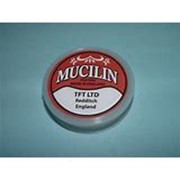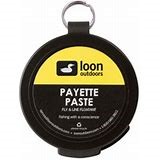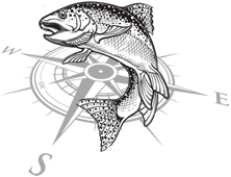Dressing your Fly Line and Leader
The term dressing your line is as old as fly fishing. Back in the early days of fly fishing fly line was made of silk. After a day on the river fly fishing you would have to unwind your silk fly line from your reel and dry it out so it would not rot on the reel. When your silk line was dry enough to your satisfaction you would then “Dress the line.” This process called on you to “Grease” the line or apply some sort of grease to the silk in an effort to keep your line floating for as long as possible. Your next fly fishing trip to the river you would “Dress the line” from time to time to prevent your fly line from sinking. A sinking fly line creates drag and the enemy of an angler is wind and drag.
 A lot has changed since those early days of fly fishing. Today with have hi tech fly rods and of course hi tech fly lines that don’t require you to dress them. I really don’t know how this kind of information made its way to the anglers on the river but I suspect it was started by fly line makers as an effort to claim they have the greatest fly line ever made. Nothing could be farther from the truth. I have had every name brand fly line on my reels and they all will eventually begin to sink. I hate drag, drag prevents my fly from having a long natural drift through feeding trout. It still amazes me to observe the sheer weight of anglers who never dress their fly lines or leaders. Of course just like most of fly fishing you will receive via the internet and Youtube a variety of opinions for, against or whatever you want on the subject of dressing your fly line and leader.
A lot has changed since those early days of fly fishing. Today with have hi tech fly rods and of course hi tech fly lines that don’t require you to dress them. I really don’t know how this kind of information made its way to the anglers on the river but I suspect it was started by fly line makers as an effort to claim they have the greatest fly line ever made. Nothing could be farther from the truth. I have had every name brand fly line on my reels and they all will eventually begin to sink. I hate drag, drag prevents my fly from having a long natural drift through feeding trout. It still amazes me to observe the sheer weight of anglers who never dress their fly lines or leaders. Of course just like most of fly fishing you will receive via the internet and Youtube a variety of opinions for, against or whatever you want on the subject of dressing your fly line and leader.
In today’s fly fishing there is a plethora of new techno leaders on the fly shop shelves and they vary in their weight and lengths. There are furled leaders made of cloth, long heavy engineered leaders, knotted leaders and of course tapered leaders. Most require you add the tipped to the bought leader. Either way these leaders create weight at the end of your fly line and will sink. Remember sinking leaders and lines create drag. Most if not all fly lines made today come with a pre-made loop on the end that seals the fly line. However what most anglers are unaware of is that fly lines, especially the last 10 feet, develop micro cracks rather quickly. Micro cracks in your fly line give water a place to go and your line will literally suck water in giving weight to the tip of your line causing it to sink. You cannot allow that to happen.
 Thankfully today we don’t have to use grease on our lines and leaders. There are many fly fishing products available for you to use that will seal up those cracks in your fly line and create lift on your leaders. Loon makes a good one in Payette Paste. Before I walk down the river or if I see my line or leader begin to sink I will open the lid to my Payette Paste and lay the last 10 feet of my fly line over the contents, which is a hard hydrophobic silicone, with my thumb on top of the fly line I just pull the last 10 feet of my fly line through the silicone and continue through to the end of the butt section of my leader. I never use it on my tippet section. That’s enough to seal any micro cracks in my fly line and it will give lift to the butt section of my leader keeping my fly line and leader on the surface. This little trick will help keep my fly floating for hours. Try it.
Thankfully today we don’t have to use grease on our lines and leaders. There are many fly fishing products available for you to use that will seal up those cracks in your fly line and create lift on your leaders. Loon makes a good one in Payette Paste. Before I walk down the river or if I see my line or leader begin to sink I will open the lid to my Payette Paste and lay the last 10 feet of my fly line over the contents, which is a hard hydrophobic silicone, with my thumb on top of the fly line I just pull the last 10 feet of my fly line through the silicone and continue through to the end of the butt section of my leader. I never use it on my tippet section. That’s enough to seal any micro cracks in my fly line and it will give lift to the butt section of my leader keeping my fly line and leader on the surface. This little trick will help keep my fly floating for hours. Try it.

